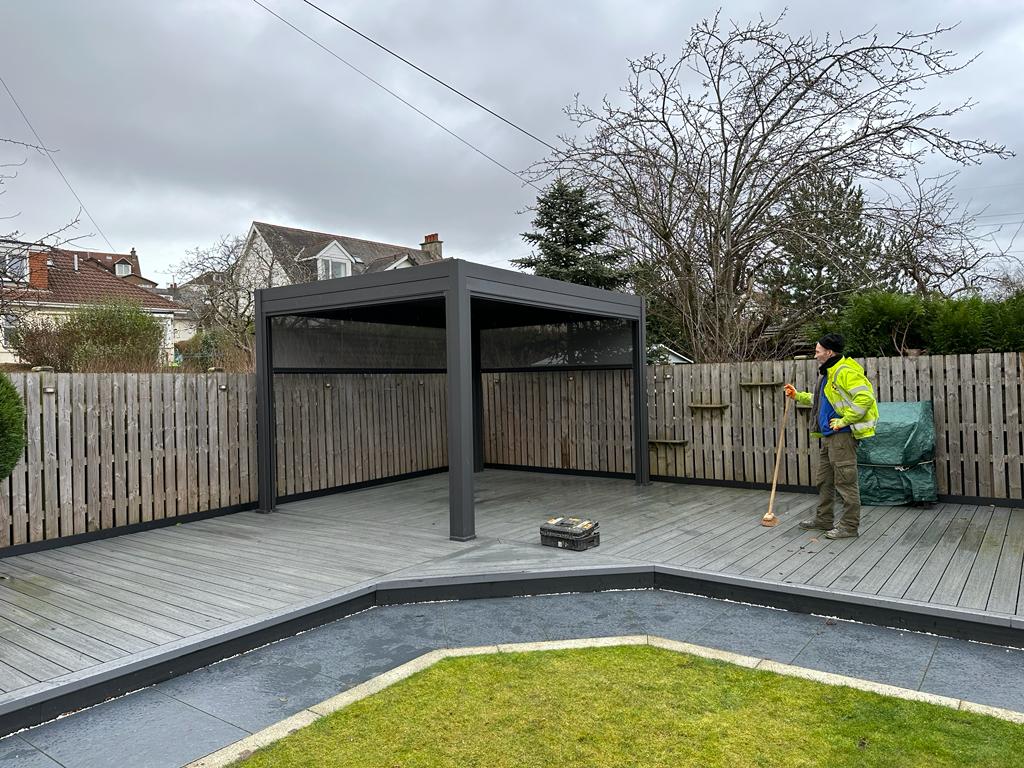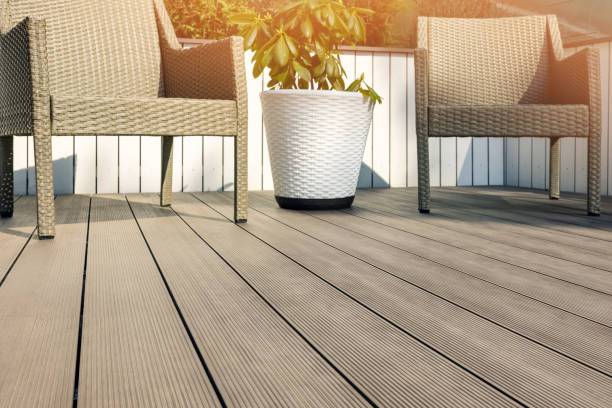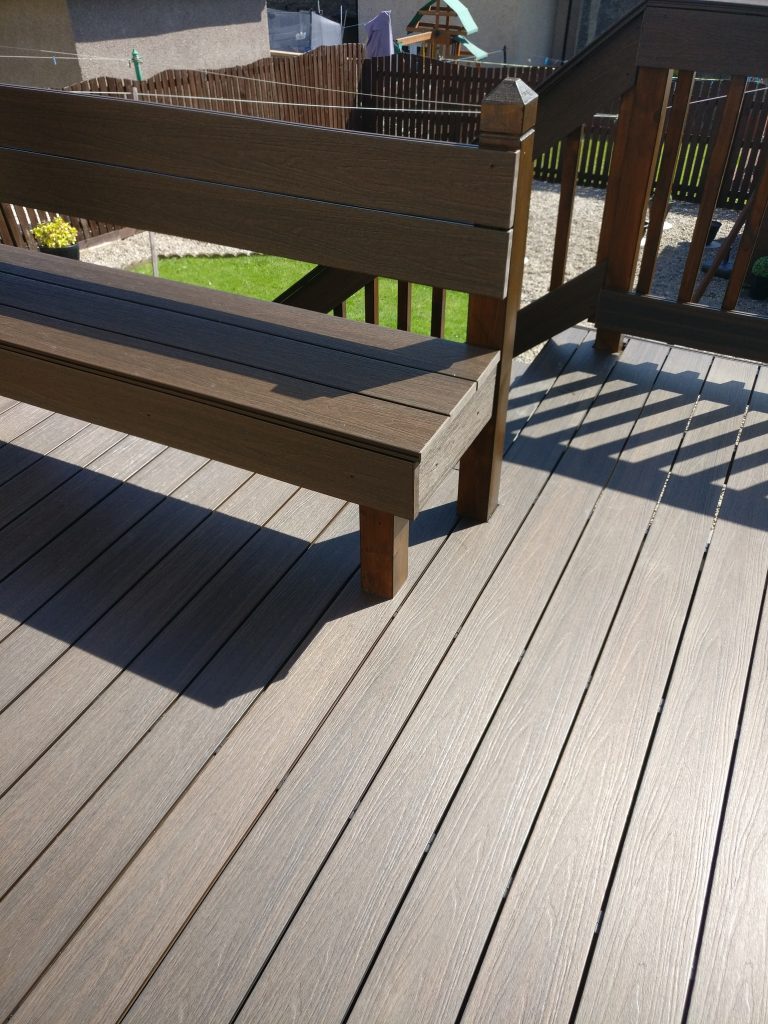Are you considering upgrading your outdoor space with composite decking, but unsure if you can install it over existing tiles? In this comprehensive guide, we’ll delve into the possibilities of putting composite decking over tiles, exploring the advantages and disadvantages of this approach.
We’ll also walk you through the step-by-step process of laying composite decking over tiles, and provide alternatives for achieving your desired outdoor deck transformation. Whether you’re seeking a convenient solution or exploring alternative options, this article will equip you with the knowledge to make informed decisions about your decking project.
Composite decking is a type of outdoor flooring made from a blend of wood fibres and plastic. It is designed to be more durable and low-maintenance than traditional wood decking, with a longer lifespan and resistance to rot, mould, and insects.
Composite decking is a modern alternative to traditional wood decking, made from a combination of wood fibres and recycled plastic materials, offering a durable and low-maintenance surface for outdoor use.
It is designed to resist fading, staining, scratching, and mould, making it an excellent choice for areas with high foot traffic or exposure to the elements. The installation process involves similar techniques to wood decking, with the added benefit of hidden fixings that create a sleek, uniform appearance.
Composite decking provides the aesthetic appeal of natural wood with the advantage of minimal upkeep. It may have a higher upfront cost compared to wood, and extreme temperatures can cause some composite materials to expand or contract.
What Are Tiles?
Tiles are versatile and durable pieces of material commonly used for surface covering, available in various designs, patterns, and materials suitable for both indoor and outdoor applications.
They come in materials such as ceramic, porcelain, glass, and natural stone, each offering unique characteristics. The installation process varies depending on the type of tile. Ceramic and porcelain tiles are often installed using thin-set mortar, while natural stone tiles may require a different approach due to their weight and specific maintenance needs.
The range of designs available includes:
- Classic underground tiles
- Intricate mosaic patterns
- Modern geometric shapes
Catering to diverse aesthetic preferences.
Can you lay composite decking over tiles?
The installation of composite decking over existing tiles is a practical option for outdoor surface renovation and upgrade projects, providing a convenient solution for enhancing the aesthetic appeal and functionality of the existing tiled surface.
This process can be cost-effective and time-saving, as it eliminates the need to remove the existing tiles. The first step involves ensuring that the tiles are in good condition without any significant cracks or damage. If the tiles are sound, the installation can proceed without requiring their removal. Utilising specialised joist systems and fasteners designed for composite decking, the new surface can be securely installed over the tile. This method not only saves on labour and disposal costs but also reduces the environmental impact of renovation projects.
Composite decking offers durability, low maintenance, and resistance to moisture and UV rays, making it an attractive option for outdoor spaces.
What are the benefits of installing composite decking over tiles?
Fitting composite decking over existing tiles offers several advantages, such as enhancing the outdoor surface with a durable and low-maintenance material, providing a fresh appearance and extending the longevity of the surface.
This approach not only improves the aesthetic appeal of the outdoor area but also reduces the need for regular maintenance, saving time and effort. Composite decking is resistant to rot, mould, and fading, ensuring long-term durability and weather resistance. The installation process is relatively straightforward, making it a cost-effective and efficient option for transforming outdoor spaces.
What Are The Disadvantages Of Putting Composite Decking Over Tiles?
Whilst installing composite decking over tiles is advantageous, certain drawbacks may include compatibility and feasibility issues, as well as challenges related to surface preparation and adherence to building codes or guidelines.
Compatibility issues may arise if the existing tiles are uneven or damaged, affecting the stability and longevity of the decking. Feasibility concerns may involve the added weight of the composite decking, potentially exceeding the load-bearing capacity of the underlying tiles. Surface preparation for proper adhesion can be labour-intensive and time-consuming, while ensuring compliance with building codes and regulations may require modifications to the existing structure.
Warranty coverage for the composite decking may be affected when installed over tiles, posing a risk in case of any future issues.

What Are The Steps To Put Composite Decking Over Tiles?
The process of installing composite decking over tiles involves several key steps, including:
- Surface preparation
- Measuring and cutting the decking material
- Laying it over the tiles
- Securing the decking in place
- Applying finishing touches to ensure a seamless and resilient outdoor surface
One of the initial crucial steps is to thoroughly clean the existing tile surface, removing any debris, dirt, and loose tiles. Then, it’s important to ensure that the structure beneath the tiles can provide ample support for the composite decking. This may involve reinforcing the substructure with additional joists or supports to accommodate the added weight of the decking material.
Once the surface is prepared and the structural support is in place, the next step is to carefully measure and cut the composite decking boards to fit the dimensions of the outdoor area. The boards should be laid over the tiles with precision, ensuring consistent spacing and alignment. After the decking is positioned, it should be securely fastened to the substructure to prevent shifting or movement.
The finishing touches such as trim pieces and railings can be added to complete the transformation of the outdoor space.
Clean The Tiles
Before installing composite decking over existing tiles, thorough cleaning and preparation of the tiled surface is essential to ensure proper adhesion and longevity of the new decking material in outdoor environments.
This process starts with a comprehensive inspection of the tiled surface, identifying any cracks, chips, or uneven areas that may require repair or levelling. Cleaning involves removing any dirt, debris, oils, or existing sealants to create a clean and smooth surface. It’s crucial to follow the manufacturer’s guidelines for cleaning products and methods, ensuring compatibility with both the tiles and the composite decking material.
Once installed, regular maintenance with gentle cleaning solutions and periodic inspections can help preserve the beauty and performance of the decking surface for years to come.
Measure and cut the composite decking
Accurate measurement and precise cutting of the composite decking material are crucial steps to ensure a seamless and visually appealing fit over the tiled surface, enhancing the overall aesthetic of the outdoor deck.
This process demands meticulous attention to detail, beginning with precisely measuring the dimensions of the area to be covered with the decking material. Once the measurements are accurately recorded, the next step involves carefully marking and cutting the composite boards to fit perfectly over the existing tiles. Ensuring that the cuts are straight and clean is essential to achieve a professional finish and a secure installation. Proper fitting not only enhances the deck’s appearance but also contributes to its durability and longevity.
Lay the composite decking over the tiles
Carefully laying the composite decking over the prepared tiles requires attention to surface flatness, levelling, and proper adhesion methods to ensure a resilient and visually appealing surface for outdoor use.
This process begins with thorough surface preparation. The tiles must be clean, dry, and free of any debris or residues that could compromise the adhesive bond. Any uneven areas should be addressed to create a level base for the decking.
Adhesion techniques such as using a high-quality adhesive or mechanical fasteners are essential to secure the decking in place. Visual considerations such as the colour and texture of the decking should also be factored in to create a cohesive and aesthetically pleasing outdoor space.
Secure The Decking In Place
Securing the composite decking in place over the tiles involves the use of appropriate fixings and tools to ensure structural integrity, resilience, and longevity of the renovated outdoor deck surface.
This process starts with preparing the substructure, ensuring it is level and securely anchored. Once the appropriate substructure is in place, the composite decking boards are laid out and secured using high-quality stainless steel or coated screws. It’s essential to use the recommended spacing and fixing guidelines provided by the decking manufacturer to maintain proper alignment and allow for natural expansion and contraction. This meticulous approach not only enhances the visual appeal but also contributes to the overall structural stability for years to come.
Add Finishing Touches
Completing the installation of composite decking over tiles involves adding finishing touches to ensure a seamless and aesthetically pleasing look, enhancing the visual appeal and functionality of the outdoor deck surface.
This may include carefully trimming the edges and corners of the decking to fit precisely, allowing for a smooth and uniform appearance. Applying a high-quality finish or sealant can protect the decking from wear and tear, while also accentuating the natural texture and colour variations.
Paying attention to details such as using colour-coordinated screws and concealing visible fasteners further contributes to achieving a polished and cohesive finish. Incorporating accessories such as railings, lighting, and decorative elements can add a touch of personal style, elevating the overall ambiance of the outdoor space.
What Are The Alternatives To Putting Composite Decking Over Tiles?
Whilst installing composite decking over tiles is a feasible option, several alternatives exist, including:
- The removal of tiles for direct decking installation involves physically removing the existing tiles and installing the composite decking directly onto the subfloor.
- The use of interlocking deck tiles provide a convenient and cost-effective option, as they can be placed directly over the existing tiled surface.
- Constructing a raised deck allows for the creation of a new decking surface above the tiles, requiring proper structural support.
- Employing a decking overlay system involves placing a specialised overlay material over the existing tiles to create a new surface for the composite decking.
- Installing a floating deck over the tiles provides a versatile and non-invasive option.
Remove the tiles and install the decking
The direct removal of existing tiles and subsequent installation of decking provides a traditional alternative to laying composite decking over tiles, allowing for a fresh and direct approach to outdoor deck renovation.
This process involves carefully taking apart the existing tiles and addressing any underlying issues before laying the new decking material. By choosing this approach, homeowners can ensure a level and stable foundation for their new outdoor space.
The direct installation of decking allows for greater customisation and creativity in the design, as it eliminates the constraints imposed by the existing tile layout. It also offers the advantage of a longer lifespan for the decking, as it is not subject to the potential wear and tear of being placed over pre-existing tiles.
Use Interlocking Deck Tiles Over The Tiles
Interlocking deck tiles present a convenient alternative, offering a modular and adaptable solution for covering the existing tiles with a resilient and visually appealing surface suitable for outdoor use.
These tiles are designed for easy installation, eliminating the need for specialised skills or equipment. Their versatility allows them to be placed directly over concrete, wood, or any hard, flat surface, transforming the outdoor deck into an inviting space.
Interlocking deck tiles come in various materials, from durable hardwoods to low-maintenance composite options, catering to different styles and preferences. Their interlocking system ensures a secure fit, giving the deck a polished and sophisticated look while withstanding outdoor elements.
Build a raised deck over the tiles
Constructing a raised deck over the existing tiles provides an elevated and versatile alternative, offering opportunities for enhanced design and structural considerations, creating a distinctive outdoor space for various activities and functions.
This alternative method allows homeowners to maximise their outdoor space, as it eliminates the need to remove the existing tiles whilst adding a new layer of functionality. By incorporating a raised deck, individuals have an elevated platform for relaxation, entertaining, or dining. The added height provides better ventilation and drainage, preventing moisture build-up that could damage the existing tiles.
The design possibilities are endless, allowing for customisation to suit individual preferences and complement the style of the surrounding landscape.
Utilisez un systu00e8me de revu00eatement de terrasse
Utilising a decking overlay system offers a practical solution for resurfacing the existing tiled deck, providing a seamless and efficient approach to enhancing the outdoor surface with minimal disruption and comprehensive rejuvenation.
The installation process of a decking overlay system involves meticulously preparing the existing surface, ensuring it is clean and level before applying the overlay material. This system is designed to bond securely to the existing substrate, creating a durable and visually appealing surface.
One of the key advantages of this approach is its ability to accommodate various design preferences, such as patterns, textures, and colours, allowing homeowners to customise their outdoor living spaces according to their preferences. The functionality of a decking overlay system extends to its ability to withstand diverse weather conditions and heavy foot traffic, making it a practical and long-lasting solution for outdoor surface enhancements.
Install A Floating Deck Over The Tiles
Installing a floating deck over the existing tiles offers a creative and adaptable alternative, providing opportunities for innovative design and practical solutions, while addressing the feasibility and considerations of this approach for outdoor deck renovation.
By opting for a floating deck, homeowners can make use of the existing tile surface without the need for extensive removal. The adaptability of this approach allows for a range of material choices, such as composite decking or natural wood, providing flexibility to match the preferred aesthetics.
The levelling and support systems for floating decks cater to various terrain and elevations, enabling seamless integration with the outdoor space while minimising the need for complex alterations to the existing structure.







